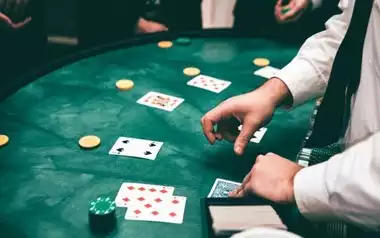If you’ve ever walked into a casino and noticed one blackjack table requiring a €5 minimum bet and another demanding €500, you’re not alone in wondering how those numbers are decided. It's not done on a whim. Setting table limits is a calculated process rooted in economics, psychology, logistics, and a dash of good old-fashioned human behaviour.
Let’s lift the velvet rope and peek behind the curtain at how and why casinos choose their table limits.
It All Starts With Risk
At its core, a casino is a business. Like any business, it must manage risk. Table limits—both minimum and maximum—are a crucial part of that.
The maximum limit is often set to protect the house from the rare but real chance of large player wins. If a high-roller were allowed to place €1 million on a single spin of roulette, a win would take a serious chunk out of the casino’s reserves. So they cap bets to mitigate damage. It's a bit like setting a seatbelt on a rollercoaster: the ride’s wild, but the casino doesn’t want to get flung off.
Minimum limits, on the other hand, ensure each game brings in enough revenue to justify the resources it consumes. A table with a dealer, physical space, and maintenance costs needs to generate income—even during slow hours. If people are only betting 50p a hand, that table might not pay its own wages.
H2: The Martingale Problem
Betting systems like the Martingale (where you double your bet after every loss to eventually win back everything) seem clever on paper. But they pose a real problem for casinos if left unchecked.
Without a cap, a losing streak followed by a win could clean the house out. Setting a maximum bet limit disrupts this system. Even if a player starts at €5, they can’t keep doubling forever. Eventually, they’ll hit the ceiling. That ceiling is there for good reason.
Our recommended online casino sites.
Reading the Room
Casinos don’t just set one limit for everyone. They read the room—literally. Table limits are often based on the casino’s location, its clientele, and even the time of day.
In the morning or midweek, you’re likely to find lower limits. These attract casual players or tourists looking to play without emptying their pockets. Come Friday night, though, and everything changes. High rollers arrive. The energy ramps up. Table minimums go up with it.
It’s a bit like a pub adjusting the price of drinks during happy hour, but in reverse.
High-Stakes Hideaways
For the elite few, casinos offer private rooms with lofty table limits. These aren’t always on display. Some are hidden behind guarded doors, only accessible by invitation or VIP status.
In these high-stakes areas, the game changes—figuratively and literally. The stakes are astronomical, but so is the service. Think champagne on demand, personal dealers, and a level of opulence that makes a luxury hotel lobby look like a coffee shop. The high table limits reflect the players' bankrolls and expectations. It’s all about exclusivity and prestige.

High-Stakes Hideaways
Table Occupancy and Flow
Casino floor managers don’t just look at money; they look at movement. A table that’s always full is good, but a table that clogs up traffic or slows gameplay? Not so much.
Higher limits often come with faster play. Fewer players, fewer hesitations, more hands dealt per hour. That means more revenue. Conversely, low-limit tables tend to be packed, slower, and filled with players double-checking basic strategy cards. That’s not a bad thing—but it has a time and place.
By adjusting limits, casinos balance the floor. They steer players, create space, and ensure no single table becomes a bottleneck or black hole.
Online Casinos Play By Their Own Rules
In the digital world, table limits take on a new flavour. Without physical constraints or staff costs, online casinos can offer a much broader range of limits. You’ll often find blackjack tables that accept everything from 10p to thousands of pounds per hand.
This flexibility allows online platforms to serve all kinds of players at once—no need for floor space or velvet ropes. For those looking for the best online casino sites, this variety is often a deciding factor.
Online operators also use dynamic limits that shift based on demand, promotions, and even player behaviour. It’s data-driven and adaptable, giving users a truly flexible gaming environment.
The Psychology of Minimum Bets
Here’s a nugget: a low minimum bet doesn’t just make a table accessible—it makes it inviting.
A €2 blackjack table feels casual, friendly. You can sit down with a drink and play for hours without feeling pressure. On the flip side, a €100 minimum bet table exudes tension. One wrong move could cost a night out.
Casinos use this psychology to set the tone. Want to encourage relaxed fun? Lower the limit. Want to create a serious, high-stakes vibe? Crank it up.
It’s less about the number and more about the atmosphere it creates.
Regulations and Red Tape
Let’s not forget about the legal side. In many jurisdictions, gambling authorities place restrictions on table limits to promote responsible gambling. Some casinos can’t offer limits beyond a certain amount, or they need special permission to do so.
These rules vary by country and even by region within countries. Casinos must carefully balance their own goals with compliance. Nobody wants to risk a fine or, worse, losing their licence.

Regulations and Red Tape
Behind every number on a casino table is a decision—one backed by finance, psychology, logistics, and years of experience. Whether you’re betting €1 or €1,000, those limits are there for a reason.
Next time you step into a casino or load up an online platform, take a moment to notice the table limits. They're telling you something—about the players, the game, the time, even the mood.
And if you’re on the hunt for the best online casino sites, keep your eyes peeled for those that offer flexible limits. After all, the right game at the right stake can make all the difference.







